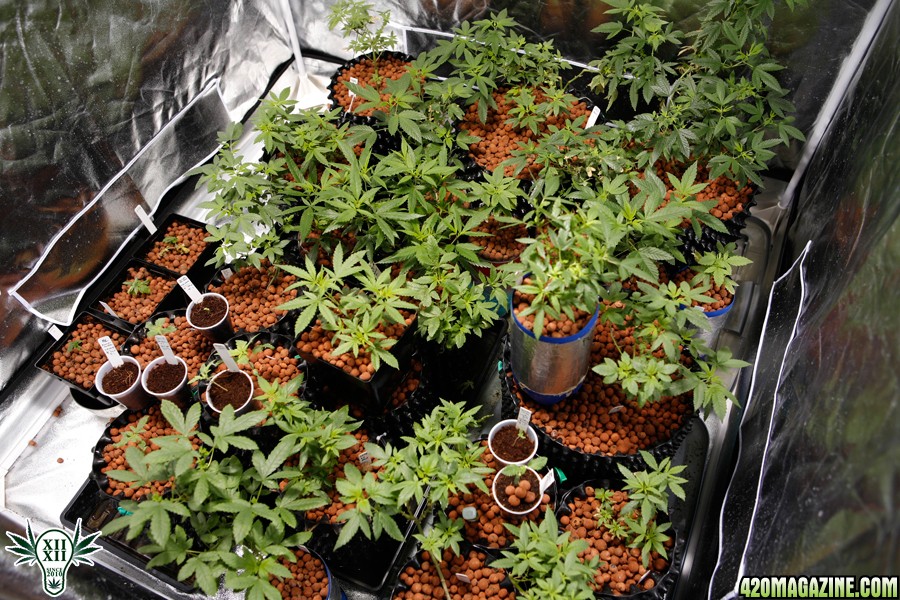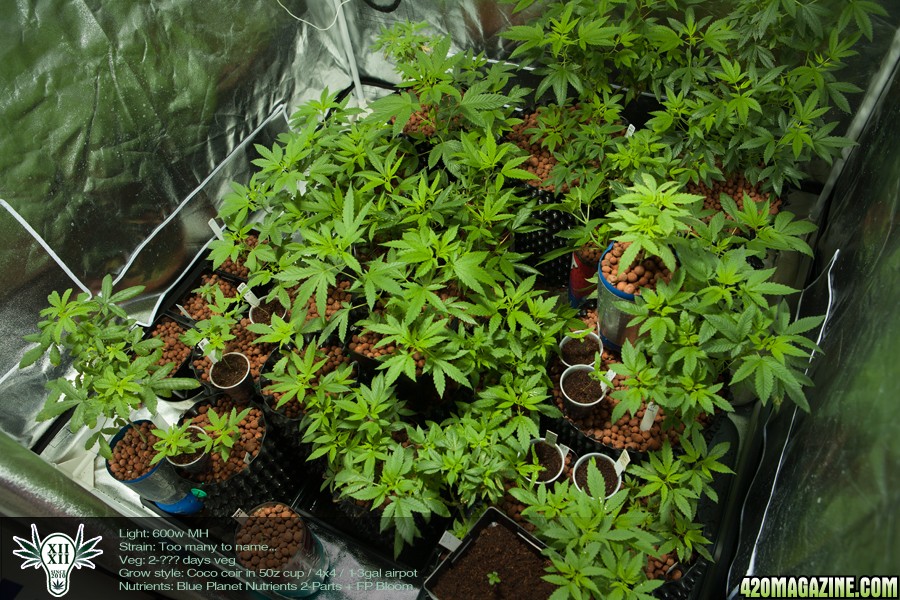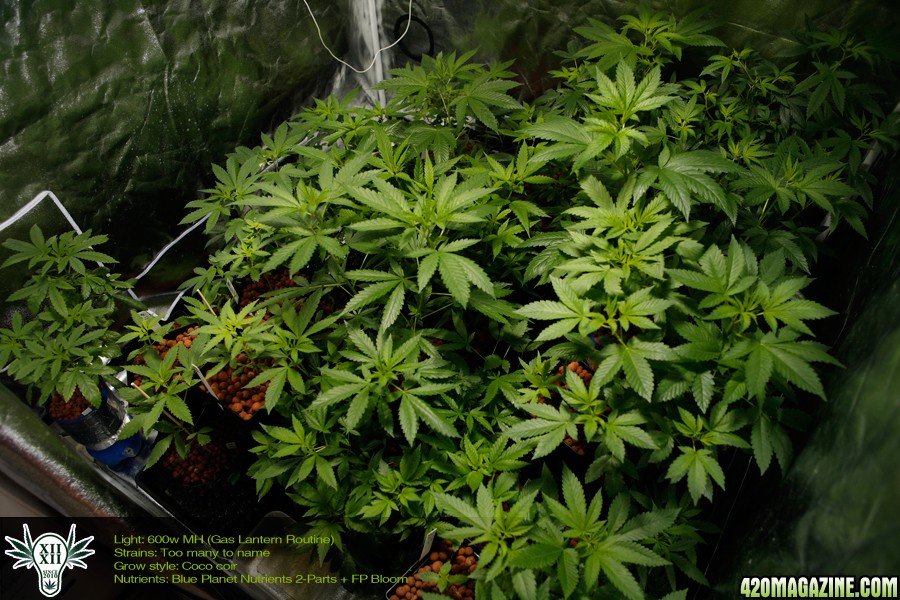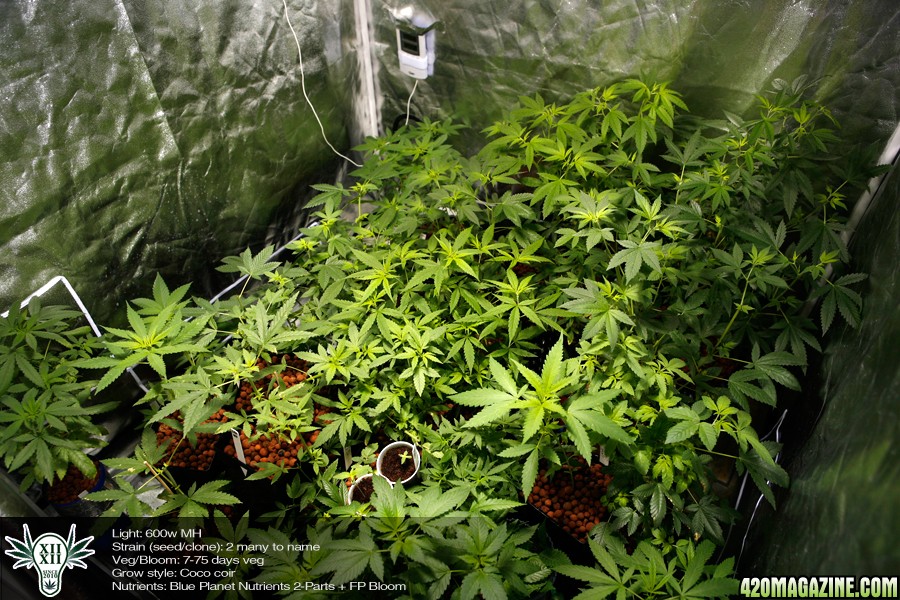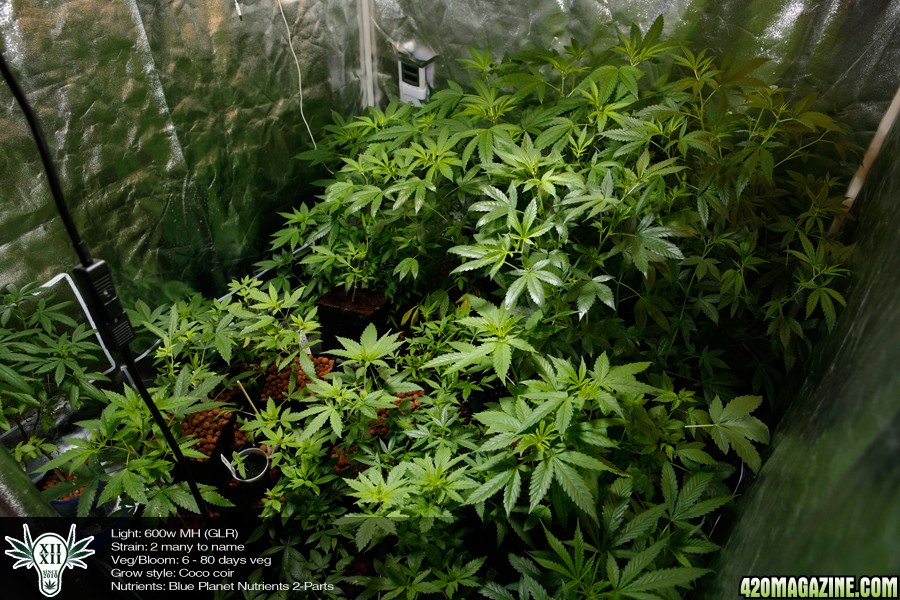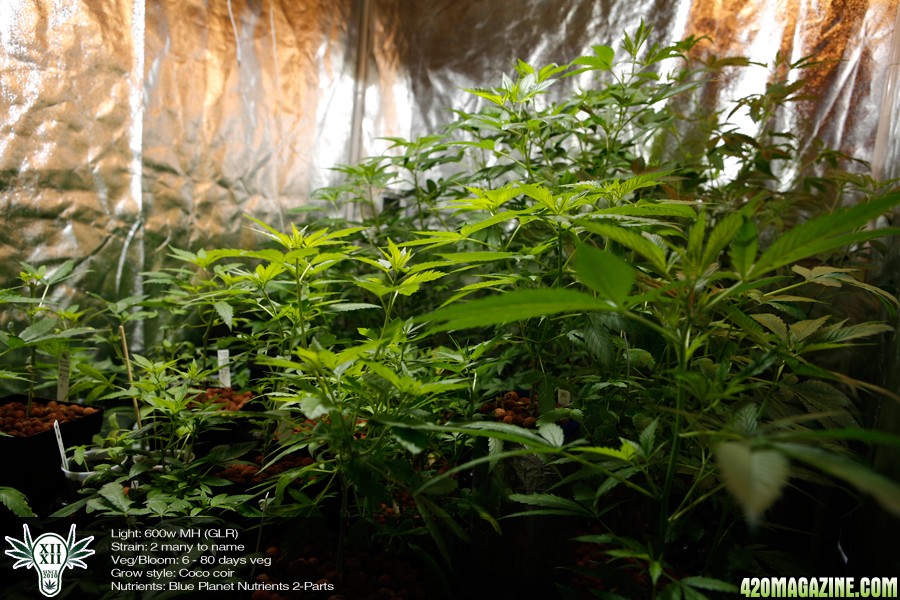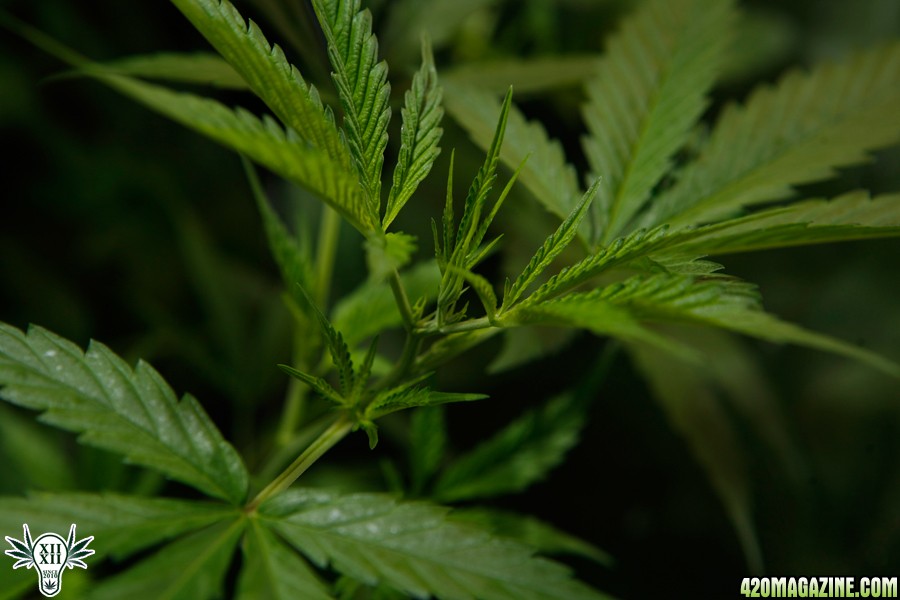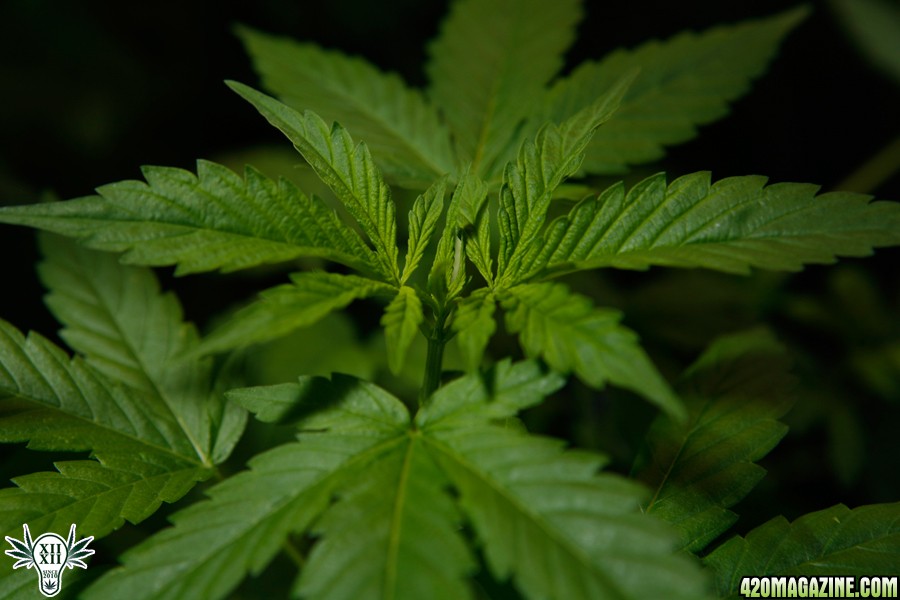The Gas Lantern Routine for Growing Cannabis
By Daniel Boughen
Observing Natural Cycles
During the course of my observations growing cannabis, I have noticed that factors such as clone burn-out seem to suggest that overexposure to light is adversely affecting the hormonal balance of the growing plants and causing the genetics of the cuts and seedlings to degrade over the course of several generations. Cannabis seems quite happy when the hormones are allowed to properly build up more during a natural outdoor vegetative cycle, and this may contribute to more balanced levels of THC and CBD, resulting in a more positive response to triggering, and better-quality medicinal cannabis being grown.
I turn to the conditions of nature to find the solution, and in a natural model, I can see that from the point of view of the plants, the sun gradually moves past, casting sunbeams and shadows of objects and trees in front, beside, and behind the plant successively across photo surfaces during the course of the day. This clearly shows that in the natural environment, the play of light and shadow are significant to the natural progress of the plant.
Even in a northern climate, there is no such thing as 18 hours of direct and intense lighting anywhere to be found, and most areas where the summer is short, the lighting is no longer than 16 hours in total.
During a recent discussion with other growers, we rediscovered a rumored century-old technique that proves that the direct and intense application of light for longer than necessary can be more stressful to the plant than previously known, and could even degrade the plants genetic strength.
Now that cannabis growers are starting to grow specifically for medicines, the health of the plant needs to be properly considered so that the full natural potential of the plant can be realized and the fullest expression of the plants medicines be produced. The margin for error is becoming smaller as the mistakes of the past are revealed and medicinally specific growing is gaining importance.
The Old Cash Cropping Method
The commonly used cash cropping method of cannabis cultivation wastes energy. People use this method by rote, since they simply dont know what the real requirements of the plants are. It is stressful to the hormonal systems of cannabis, and not necessary to produce fully healthy and productive plants. It does not recognize that overexposure to light is harmful to the plants, and so they underperform in terms of taste, yield, quality, and potency of the medicine, or require supercharged fertilizers to reach their potential. It is surprising that these techniques are used with profits in mind, since they are clearly expensive and counterproductive.
The Gas Lantern Routine
This information will seem quite revolutionary to growers who have been using the standard cycles to produce cannabis, seemingly with little or no trouble at all. Actually, in a grow that more closely mimics the outdoor growing environment under indoor lighting conditions, the plants may be maintained in vegetative cycle using only a total of 13 hours of light daily, which dramatically reduces the cost of production.
The less is more approach of the Gas Lantern Routine provides the growing plant with adequate darkness to promote health, and by inserting a full hour of light in the center of the dark period, the plants are tricked, and neither flower nor express hermaphrodites. The growing plants get more than the average amount of rest, thus reducing stress, and improving plant yield, overall performance, and medicinal quality.
Seedlings and Cuttings
The Gas Lantern Routine is applicable in seedling phases of plant growth. As stated before, nowhere in nature does the springtime ever provide an 18-hour photosynthesis length; rather, the growing spring light may in fact be 12 hours or less. Lighting for seedlings and cuttings needs to be bright, but compact fluorescent or T5 lighting may be used while in the seedling phase. Rooted mature cuttings can immediately light with HID lighting.
The Vegetative Schedule
This method is quite simple: 12 hours of light, followed by five and one half hours of darkness, a single hour of light exactly, and then a second period of five and one half hours of darkness. Placing a full hour of light in the very center of a 12-hour dark period tricks the plant and interrupts the buildup up of sensitive floral hormones, which would normally trigger flowering by destroying them. The grower simply raises the plants to the desired size before switching to the fall schedule to bloom.
Using this method, vegetative duration may be also reduced, and with a shorter growth cycle comes more frequent and better production. Vegetative cycles can be shortened by one to two weeks, and flowering may also be shortened a week or more using this method in con- junction with a diminishing light schedule.
For patients growing their own medicine or for compassionate cannabis providers, production turnover may be increased from four to five crops per year or more using rotation, and power consumption can be reduced even further by the use of high-intensity fluorescent lighting during vegetation, and overall, power consumption savings can be 50 percent or more.
The Flowering Schedule
Plants that have been grown up using the Gas Lantern Routine are now supercharged with floral hormones, and ready to go into flower with the slightest provocation. The interruption of the dark period has been destroying enough of the naturally building hormones to keep the plant from expressing sex, and the well-rested plant now has plenty of stored nutrients and energy to finish its life cycle and flower. Triggering the plants is essentially just a matter of removing the interrupting light period, so the plants may now experience the full buildup of hormones that will trigger blooming.
In keeping with providing all the correct organic biological and environmental needs of the plant, the diminishing fall schedule should be employed to take full advantage of the hormonal preparation created by using the Gas Lantern Routine. The diminishing hours of light in nature trigger acceleration in the production of hormones in the plant, making it flower with increasing speed and power.
The Diminishing Lighting Schedule
The diminishing fall schedule begins with an evenly halved light schedule, using 12 hours for the first two weeks to trigger the plant into bloom, and then further reducing the lighting for increasing darkness time by one half hour every week.
The final week of flowering will provide the plants with a mere nine hours of light, with 15 hours of darkness, forcing a resulting final explosive hormonal buildup. This sends the plant into blooming overdrive and produces resin far beyond the normal plants limits.
When the Gas Lantern Routine and Diminishing Light Schedule are used together, they create healthier, more naturally robust plants. These important and historical botanical techniques are soon going to become very important techniques in the coming years as medicinal cannabis research continues to advance. When viewed from cost of production, organics, and medicinal needs, the methods currently being promoted can be seen counter to the interests of growing healthy plants. Understanding your plants is the best way to grow the best medicine, and looking for solutions to growing problems by observing nature always provides the right answers.
-
My 1 month trail run!
By Daniel Boughen
Observing Natural Cycles
During the course of my observations growing cannabis, I have noticed that factors such as clone burn-out seem to suggest that overexposure to light is adversely affecting the hormonal balance of the growing plants and causing the genetics of the cuts and seedlings to degrade over the course of several generations. Cannabis seems quite happy when the hormones are allowed to properly build up more during a natural outdoor vegetative cycle, and this may contribute to more balanced levels of THC and CBD, resulting in a more positive response to triggering, and better-quality medicinal cannabis being grown.
I turn to the conditions of nature to find the solution, and in a natural model, I can see that from the point of view of the plants, the sun gradually moves past, casting sunbeams and shadows of objects and trees in front, beside, and behind the plant successively across photo surfaces during the course of the day. This clearly shows that in the natural environment, the play of light and shadow are significant to the natural progress of the plant.
Even in a northern climate, there is no such thing as 18 hours of direct and intense lighting anywhere to be found, and most areas where the summer is short, the lighting is no longer than 16 hours in total.
During a recent discussion with other growers, we rediscovered a rumored century-old technique that proves that the direct and intense application of light for longer than necessary can be more stressful to the plant than previously known, and could even degrade the plants genetic strength.
Now that cannabis growers are starting to grow specifically for medicines, the health of the plant needs to be properly considered so that the full natural potential of the plant can be realized and the fullest expression of the plants medicines be produced. The margin for error is becoming smaller as the mistakes of the past are revealed and medicinally specific growing is gaining importance.
The Old Cash Cropping Method
The commonly used cash cropping method of cannabis cultivation wastes energy. People use this method by rote, since they simply dont know what the real requirements of the plants are. It is stressful to the hormonal systems of cannabis, and not necessary to produce fully healthy and productive plants. It does not recognize that overexposure to light is harmful to the plants, and so they underperform in terms of taste, yield, quality, and potency of the medicine, or require supercharged fertilizers to reach their potential. It is surprising that these techniques are used with profits in mind, since they are clearly expensive and counterproductive.
The Gas Lantern Routine
This information will seem quite revolutionary to growers who have been using the standard cycles to produce cannabis, seemingly with little or no trouble at all. Actually, in a grow that more closely mimics the outdoor growing environment under indoor lighting conditions, the plants may be maintained in vegetative cycle using only a total of 13 hours of light daily, which dramatically reduces the cost of production.
The less is more approach of the Gas Lantern Routine provides the growing plant with adequate darkness to promote health, and by inserting a full hour of light in the center of the dark period, the plants are tricked, and neither flower nor express hermaphrodites. The growing plants get more than the average amount of rest, thus reducing stress, and improving plant yield, overall performance, and medicinal quality.
Seedlings and Cuttings
The Gas Lantern Routine is applicable in seedling phases of plant growth. As stated before, nowhere in nature does the springtime ever provide an 18-hour photosynthesis length; rather, the growing spring light may in fact be 12 hours or less. Lighting for seedlings and cuttings needs to be bright, but compact fluorescent or T5 lighting may be used while in the seedling phase. Rooted mature cuttings can immediately light with HID lighting.
The Vegetative Schedule
This method is quite simple: 12 hours of light, followed by five and one half hours of darkness, a single hour of light exactly, and then a second period of five and one half hours of darkness. Placing a full hour of light in the very center of a 12-hour dark period tricks the plant and interrupts the buildup up of sensitive floral hormones, which would normally trigger flowering by destroying them. The grower simply raises the plants to the desired size before switching to the fall schedule to bloom.
Using this method, vegetative duration may be also reduced, and with a shorter growth cycle comes more frequent and better production. Vegetative cycles can be shortened by one to two weeks, and flowering may also be shortened a week or more using this method in con- junction with a diminishing light schedule.
For patients growing their own medicine or for compassionate cannabis providers, production turnover may be increased from four to five crops per year or more using rotation, and power consumption can be reduced even further by the use of high-intensity fluorescent lighting during vegetation, and overall, power consumption savings can be 50 percent or more.
The Flowering Schedule
Plants that have been grown up using the Gas Lantern Routine are now supercharged with floral hormones, and ready to go into flower with the slightest provocation. The interruption of the dark period has been destroying enough of the naturally building hormones to keep the plant from expressing sex, and the well-rested plant now has plenty of stored nutrients and energy to finish its life cycle and flower. Triggering the plants is essentially just a matter of removing the interrupting light period, so the plants may now experience the full buildup of hormones that will trigger blooming.
In keeping with providing all the correct organic biological and environmental needs of the plant, the diminishing fall schedule should be employed to take full advantage of the hormonal preparation created by using the Gas Lantern Routine. The diminishing hours of light in nature trigger acceleration in the production of hormones in the plant, making it flower with increasing speed and power.
The Diminishing Lighting Schedule
The diminishing fall schedule begins with an evenly halved light schedule, using 12 hours for the first two weeks to trigger the plant into bloom, and then further reducing the lighting for increasing darkness time by one half hour every week.
The final week of flowering will provide the plants with a mere nine hours of light, with 15 hours of darkness, forcing a resulting final explosive hormonal buildup. This sends the plant into blooming overdrive and produces resin far beyond the normal plants limits.
When the Gas Lantern Routine and Diminishing Light Schedule are used together, they create healthier, more naturally robust plants. These important and historical botanical techniques are soon going to become very important techniques in the coming years as medicinal cannabis research continues to advance. When viewed from cost of production, organics, and medicinal needs, the methods currently being promoted can be seen counter to the interests of growing healthy plants. Understanding your plants is the best way to grow the best medicine, and looking for solutions to growing problems by observing nature always provides the right answers.
-
My 1 month trail run!
Twelve12;1389673 said:



